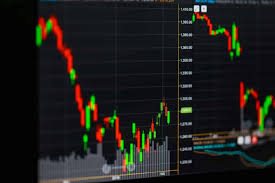Top Indicators for Successful Forex Trading 1940498938
By
Best Indicators for Forex Trading
The world of Forex trading is complex, and understanding the right indicators is vital for success. best indicators for forex trading Trading Platform VN provides tools and resources to help traders navigate the market effectively. In this article, we will discuss some of the best indicators that can aid in making informed trading decisions.
Understanding Forex Indicators
Forex indicators are statistical tools that help traders analyze price movements and market trends. They can be broadly categorized into two types: leading and lagging indicators. Leading indicators predict future price movements, while lagging indicators confirm trends that have already occurred. Depending on your trading style and strategy, you can choose indicators that suit your needs.
1. Moving Averages
Moving averages (MA) are among the simplest and most widely used indicators in Forex. They smooth out price data over a specific period, making it easier to identify trends. The two most common types are the Simple Moving Average (SMA) and the Exponential Moving Average (EMA).
The SMA calculates the average of a set of prices over a specified period, while the EMA gives more weight to recent prices, making it more responsive to new information. Traders often use moving averages to determine support and resistance levels, generate buy/sell signals, and help confirm existing trends.
2. Relative Strength Index (RSI)
The Relative Strength Index (RSI) is a momentum oscillator that measures the speed and change of price movements. RSI values range from 0 to 100, helping traders identify overbought or oversold market conditions. Generally, an RSI above 70 indicates an overbought condition, while an RSI below 30 suggests an oversold scenario.
Traders can use RSI to anticipate potential price reversals and confirm market trends. Combining RSI with other indicators can enhance its effectiveness and provide more robust trading signals.
3. Moving Average Convergence Divergence (MACD)
The Moving Average Convergence Divergence (MACD) indicator is a trend-following momentum indicator that shows the relationship between two moving averages of a security’s price. It consists of three components: the MACD line, the signal line, and the histogram.
Trade signals are generated when the MACD line crosses above or below the signal line, indicating potential buy or sell opportunities. Additionally, the histogram can provide insights into the strength of the trend, making MACD a versatile tool for traders.
4. Bollinger Bands
Bollinger Bands consist of three lines: a simple moving average in the middle, along with two outer bands that are standard deviations away from the average. This indicator is used to measure market volatility and identify overbought or oversold conditions.
When prices touch the upper band, it may signal that the market is overbought, while touching the lower band may indicate an oversold market. Traders can use Bollinger Bands to spot potential breakout points and make informed trading decisions.
5. Fibonacci Retracement
Fibonacci retracement levels are horizontal lines that indicate potential support and resistance levels based on the Fibonacci sequence. Traders often use these levels to identify potential price reversal points or continuation patterns.
Common Fibonacci retracement levels include 23.6%, 38.2%, 50%, 61.8%, and 100%. Understanding these levels can help traders manage their risk and set potential entry and exit points for their trades.
6. Stochastic Oscillator
The Stochastic Oscillator compares a particular closing price of a currency pair to its price range over a specified period. This indicator produces values between 0 and 100, helping traders spot overbought or oversold conditions.

When the Stochastic value is above 80, it signals that the market may be overbought; conversely, a value below 20 indicates an oversold condition. Traders can use the Stochastic in conjunction with other indicators for more effective trading strategies.
7. Average True Range (ATR)
The Average True Range (ATR) is a volatility indicator that measures market volatility by decomposing the entire range of an asset for that period. ATR does not indicate the direction of price movement; instead, it provides insights into how much an asset’s price is likely to move within a given timeframe.
Traders use ATR to set stop-loss levels and gauge when to enter or exit trades based on market volatility. Understanding ATR can improve risk management in Forex trading.
8. Volume Indicators
Volume indicators measure the number of shares or contracts traded during a specific period. Higher volume typically indicates a stronger trend, while lower volume can suggest a potential reversal. Common volume indicators include On-Balance Volume (OBV) and Chaikin Money Flow (CMF).
Incorporating volume analysis into your trading strategy can help verify trends and confirm buy/sell signals, improving overall trading outcomes.
Conclusion
Choosing the best indicators for Forex trading can significantly enhance your trading strategy and decision-making process. While no indicator is foolproof, using a combination of different tools can provide a more comprehensive view of the market and improve your potential for profitability.
Remember to backtest any indicators you choose to use and combine them with proper risk management techniques. Consistency and discipline are paramount in Forex trading; therefore, thorough analysis and strategic planning will lead to better trading results.
Happy trading!